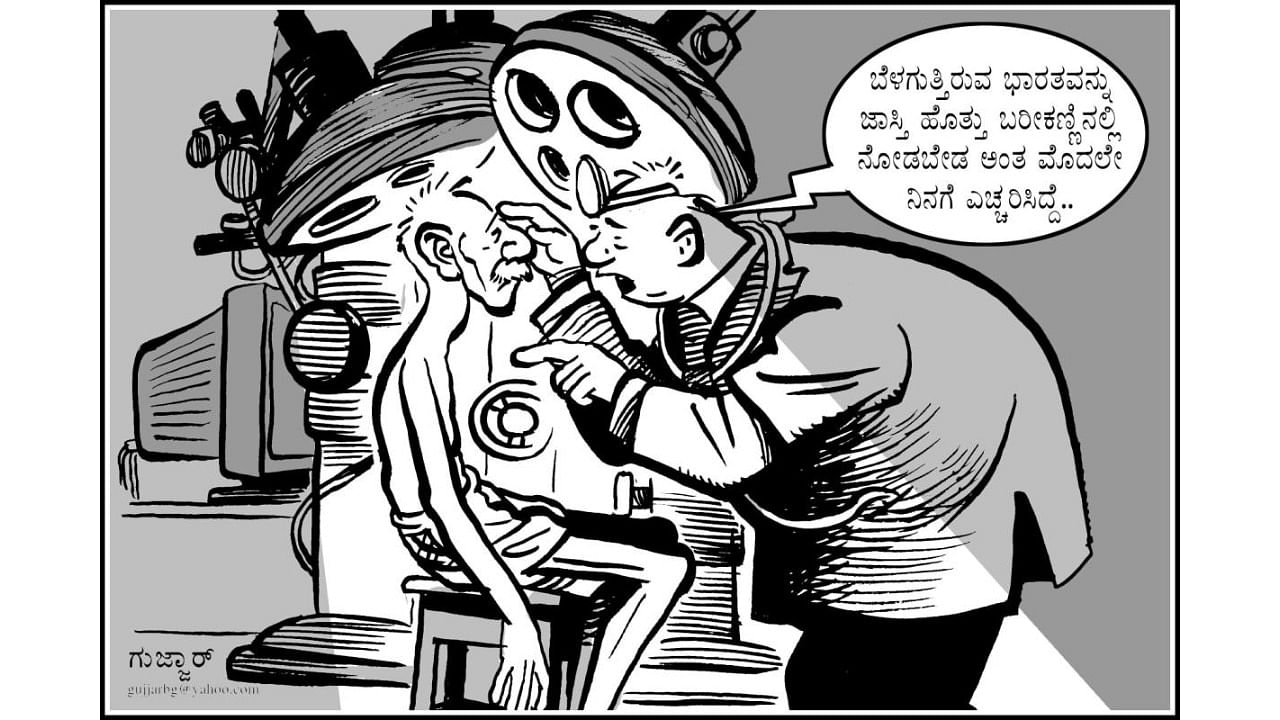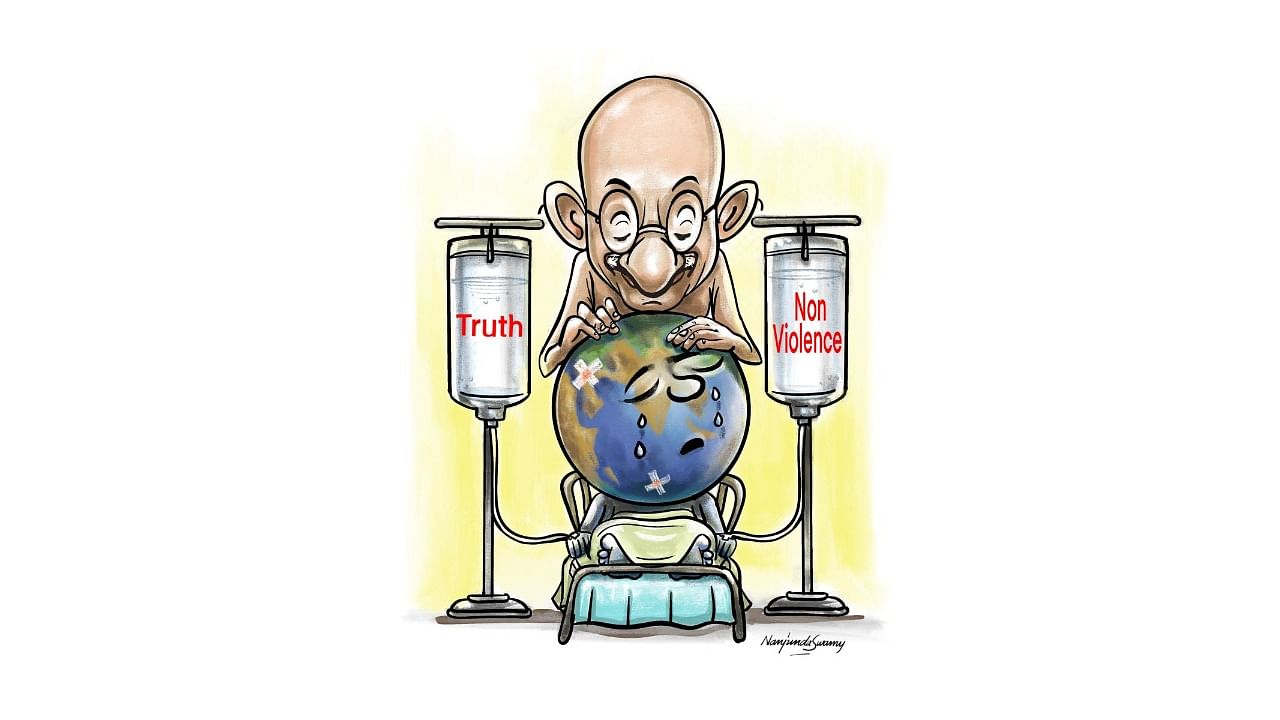

Like many things, editorial cartoons and illustrations have gone digital. Sketches are now made with a stylus (digital pen) on tablets. But how has this evolution changed the art form and the field of editorial cartoons? We asked artists who have seen the change happen through the ‘80s till now.
Nibs to clicks
B G Gujjarappa aka Gujjar says the transition from drawing on paper to drawing digitally hasn’t impacted the storytelling aspect of cartoons, illustrations and caricatures or the multimedia works he does now. But it has opened up a world of possibilities.
“While working with paper and ink, one has to retouch the changes with white paint or draw lines again. On the computer, one can simply ‘undo’ changes, and paper wastage is minimal,” he explains.
He would earlier work with rotary pens and crow quill nibs on newsprint (it absorbed the colour well). Today, the digital medium offers him a variety of materials, brushes and colours to choose from. Flash or Photoshop were his go-to software initially but now he uses Creta and Medibang as they lend to “finer lines”.
Likewise, until the 2000s, freelance illustrator and creative design consultant G S Naganath used to make black and white drawings on paper. He started out by using the black Pilot Hi-Tech Point pen and switched to calligraphy nibs dipped in waterproof ink later to achieve “thin and thick strokes”.
Talking of the perks of technology, professional cartoonist Satish Acharya says one can experiment with the size of their canvas when it comes to drawing cartoons for websites. “In newspapers, the size is determined by column space,” he explains.
B&W v/s colour
With the advent of technology, it has become easier to add colours. Earlier, a paper drawing had to be scanned and sent for printing, points out Satish.
“Editorial cartoons are ideally black and white artworks but the popularity of graphic software has made it possible to have colourful, attractive and crisp-looking cartoons,” he adds.
Not everybody is happy with this change though. “Colour schemes used in most publications are not ideal for printing,” says Naganath.
Mind over medium
Technology has improved the speed, precision and quality of their work, say cartoonists.
Satish says, “I have been making cartoons with a digital pen for the last few years. But I practice enough on paper using a pencil or pen too.”
The dexterity of hands is key. He explains, “Whether you work on a tablet or on a computer, you have to draw with your hands. If your drawing skills are not good, no technology can deliver good results.”
Gujjar says even today, many cartoonists in the West draw their artwork on paper first. “There is always an originality about drawing on paper.”
Cartoonist and illustrator Nanjunda Swamy Y S agrees and says that the experience of drawing on paper is unique.
Global influences
Indian cartoons used to be simple back in the day. They had minimal lines and colours and speech bubbles were the high points. Indian culture and politicians were common subjects as seen in the works by R K Laxman, B V Ramamurthy, Bal Thackeray, K Shankar Pillai and Mario Miranda.
On the contrary, the works abroad were detailed and powerful, says illustrator G S Naganath. “Modern influences have changed our styles, which can now resonate with everyone across the world,” he says.
Print vs social media
Some artists are concerned about the dwindling number of political cartoons. Gujjar, who worked as a cartoonist in newspapers for 15 years, says, “Most newspapers and publications do not encourage political cartoons now.”
Nanjunda says the size of editorial political cartoons has come down from four to two columns and are rarely seen on the front page. “The pocket cartoon has almost disappeared from newspapers,” he says.
However, Gujjar sees social media as a worthy alternative. “Posts like political cartoons go viral easily now,” he explains.
Elements of a good cartoon
According to these experts, the artwork, the quotes and conversations used, and the humour intended must be in sync. Composition and colours are just as integral to overall messaging.
Quotes and conversations should be grammatically correct.
More artwork and fewer words are ideal.
Don’t add too many elements around the subject as it can be distracting.
The balance of white space and black lines in black-and-white cartoons is important.
Watch the latest DH Videos here: